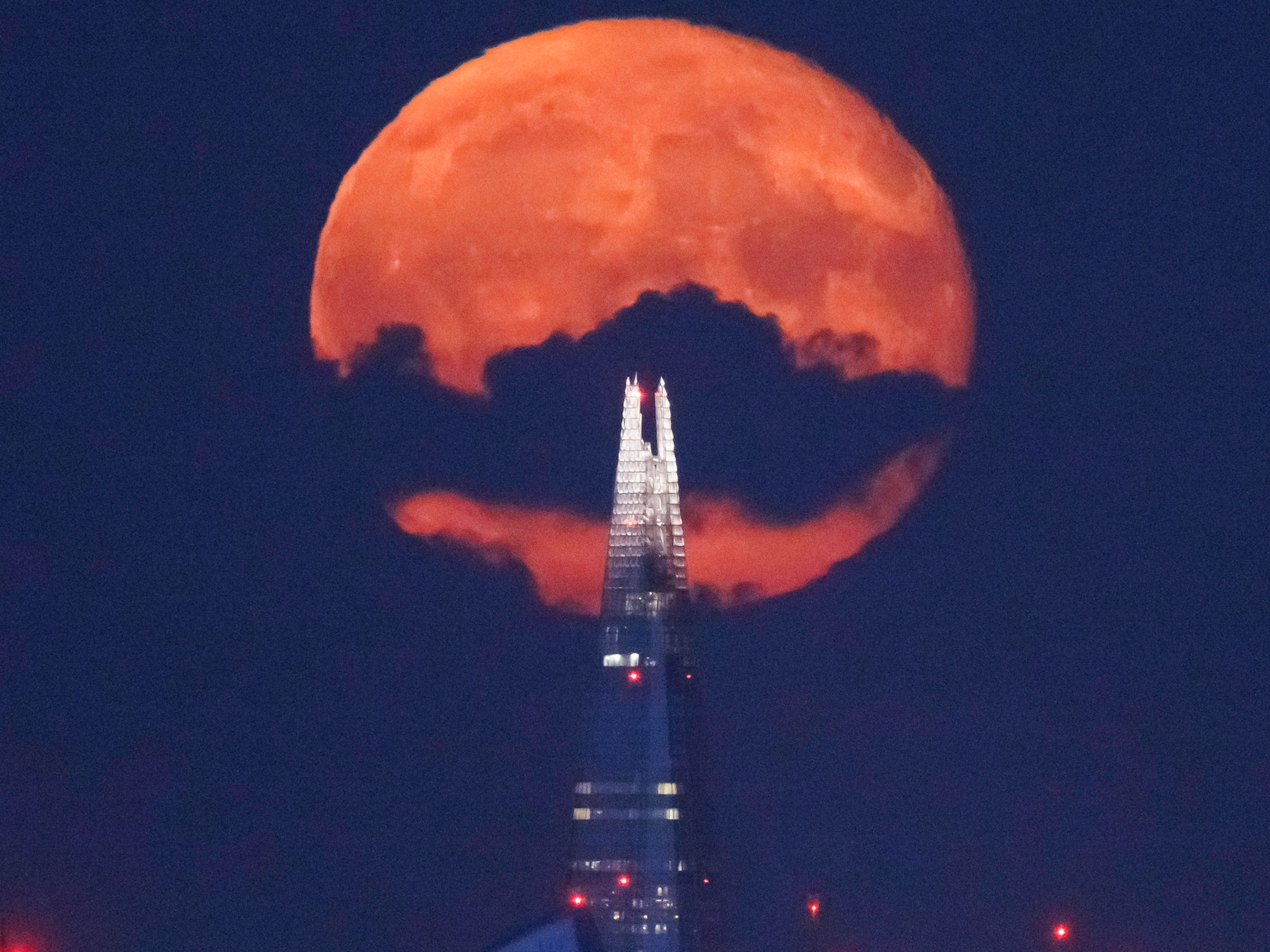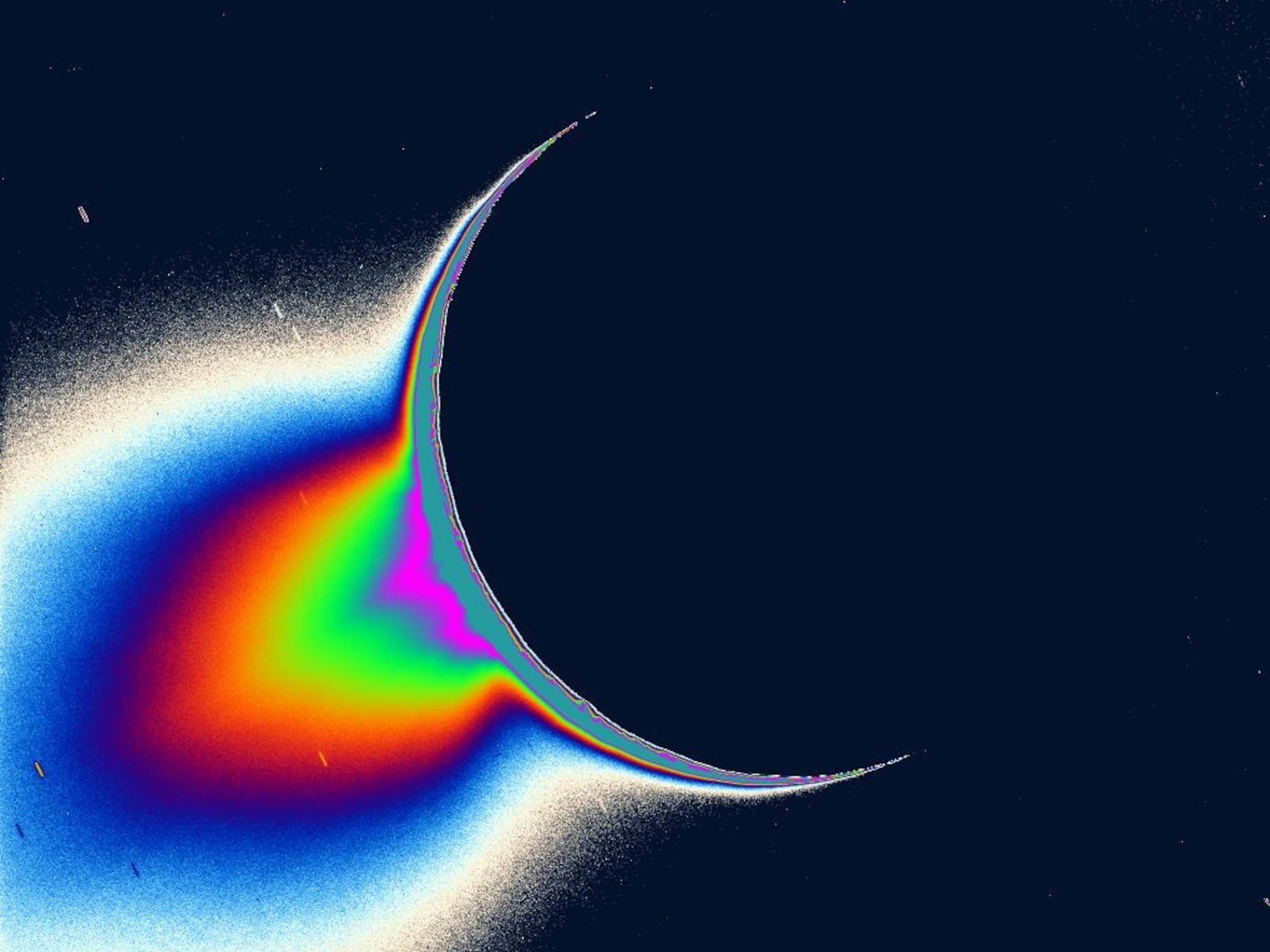
Mars Email a Hoax: No "Two Moons" Friday Night
An email promising sky-watchers a view of "two moons" on August 27 is nothing more than a seemingly unending Mars myth, experts say.
An email promising sky-watchers a view of "two moons" on August 27 has astronomers seeing red, as scientists try to counter a seemingly unending Mars hoax.
The anonymous message from an unknown part of the globe says that the red planet " … will look as large as the full moon" in the night sky, and that "no one alive today will ever see this again."
The claim has been bombarding people's inboxes worldwide every summer for years. Today the Mars hoax has grown into a kind of cyber legend—one that astronomers are still struggling to debunk.
"The possibility of seeing Mars as large as the moon strikes the imagination," said Marc Jobin, staff astronomer at the Montréal Planetarium in Quebec.
"The sad reality is that a lot of people have little comprehension of astronomy and are unable to call the hoax."
(Get the facts behind claims that the Apollo 11 moon landing was a hoax.)
Moon-size Mars Claim Has Thread of Truth
In fact, there is a thread of truth that inspired the email several years ago.
Planets are not on perfectly circular orbits, and during their elliptical paths around the sun, planets can vary in their exact distances to each other over time. (Also see: "Year's Biggest Full Moon, Mars Create Sky Show" [January 2010].)
For example, Mars's orbit means that its distance from Earth can range from 34.6 million miles (55.7 million kilometers) to almost 250 million miles (401.3 million kilometers).
On August 27, 2003, Mars made a historically tight approach to Earth, coming about 34.7 million miles (56 million kilometers) away.
Such a near pass hadn't happened in nearly 60,000 years, and it won't happen again until August 28, 2287. (See "Year's Best Mars View Tonight" [January 2010].)
In 2003 planetariums had sent out notices alerting stargazers of the real astronomical event. (Find out how to take part in "International Observe the Moon Night" next month.)
"At the time, through the telescope [Mars] looked as large as the full moon would with the naked eye," explained Geza Gyuk, astronomer at the Adler Planetarium in Chicago, Illinois.
Through a backyard telescope with a high-power eyepiece, viewers could even make out many surface features on Mars's disk.
"An email was circulated with this information, but unfortunately the part about the telescope was dropped off and people only passed on the 'size of moon' part."
With the naked eye, Mars still appeared that year as nothing more than a brilliant orange-colored star in the sky. Still, an email hoax was born.
Closer Mars Would Doom Earth?
Luckily for us, Mars won't really loom so large in our skies.
If the red planet actually did appear as huge as purported in the Mars hoax email, the planet would be just 466,000 miles (750,000 kilometers) from Earth, or about twice as far away as the moon.
At that distance, the Montréal Planetarium's Jobin said, life on Earth would likely be doomed.
(Related: "'Supergiant' Asteroid Shut Down Mars's Magnetic Field.")
Given the interplay of gravity between the planets and the sun, a much closer Mars "would have extreme consequences for the shape of the Earth's orbit, with our planet swinging much closer and much farther away from the sun," he said.
"In turn, this would make our planet's climate radically different from what we know, with extreme cold and hot weather, making for very complicated living conditions—not exactly hospitable for higher life-forms."





